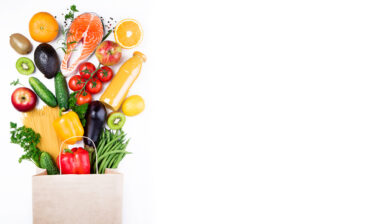Infographics
The Current State of Food Insecurity in America
Published on: May 07, 2020. Updated on: November 03, 2020.
Food insecurity
has increased during COVID-19
About the Data Insights
This infographic explores the current state of food insecurity in America. Prior to COVID-19, it was estimated that 1 in 9 people in the US were food insecure and lacked consistent access to enough food and nutritious options. Food insecurity, while tied to poverty, is also impacted by other social determinants of health, including access to transportation, housing and social isolation. As people practice social distancing and quarantine, many are faced with new challenges to accessing and affording food.
Scope of the Issue and Those at Risk: USDA, Household Food Security in the United States in 2018, September 2019
- NOTE: A household consists of all the people who occupy a housing unit. A house, an apartment or other group of rooms, or a single room, is regarded as a housing unit.
COVID-19 Food Insecurity among Households: “Assessing U.S. Food Insecurity in the United States During COVID-19 Pandemic,” Department of Sociology and Criminology at the University of Arkansas, April 23, 2020
- NOTE: The measure of food insecurity in this survey is based on the 10-question USDA Adult Food Security Survey Module1. Respondents were asked about their food-related experiences in just the last three months. For states with food insecurity reported:
- 19 states had average food insecurity percentages that were lower than the national average.
- 20 states had higher than average food insecurity percentages.
- 11 states did not meet the threshold, based on the number of respondents in the survey from that state, for reporting food insecurity averages.
- Respondents from the South and mid-South reported above-average levels of food insecurity, while the Midwest and Northeast were lower.
COVID-19 Food Insecurity among Children: The Hamilton Project, The COVID-19 Crisis Has Already Left Too Many Children Hungry in America, May 6, 2020
- NOTE: 20% is based off findings on two questions from the U.S. Department of Agriculture’s (USDA) food security questionnaire:
- The food we bought just didn’t last and we didn’t have enough money to get more.
- The children in my household were not eating enough because we just couldn’t afford enough food.
Food Banks: Feeding America, Feeding America Network Faces Soaring Demand; Plummeting Supply Due to COVID-19 Crisis, April 2020
Barriers to Food Access: Healthy People 2020, Food Insecurity, 2014
Health Outcomes: USDA, Food Insecurity, Chronic Disease, and Health Among Working-Age Adults, July 2017
- NOTE: The top 10 chronic conditions identified as particularly worthy of research because of their prevalence, cost, morbidity, and preventability that are reported in the NHIS: hypertension/high blood pressure, coronary heart disease, hepatitis, stroke, cancer, asthma, diabetes, arthritis, chronic obstructive pulmonary disease and chronic kidney disease.
Strategies to Reduce Food Insecurity: Food Research & Action Center, A Plan of Action to End Hunger in America, October 2015
Nutrition Education: “The Impact of Nutrition Education on Food Insecurity among Low‐Income Participants in EFNEP,” Family & Consumer Sciences, July 2009
SNAP Programs and School Meal Programs: USDA, USDA Announces Coronavirus Food Assistance Program, April 2020
- NOTE: USDA is crafting a $19 billion immediate relief program to provide critical support to farmers and ranchers, maintain the integrity of the food supply chain, and ensure every American continues to receive and have access to the food they need. This includes 1 million meals a month to rural students, and expanidng SNAP pilot programs that alows online purchasing and delivery of grocerys.
Strategies to Improve Food Security for the Most Vulnerable Populations During COVID-19
- Feeding America: Stocking a Healthy Pantry and Fridge
- Meals on Wheels: Keeping Seniors Safe
- World Food Program: COVID-19 Could Ignite Famine
- The Special Supplemental Nutrition Program for Women, Infants, and Children (WIC): Detailed information about WIC and how individuals can apply
More Related Content
See More on: Coronavirus | Social Determinants of Health

